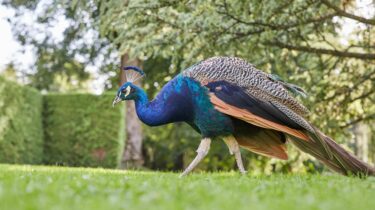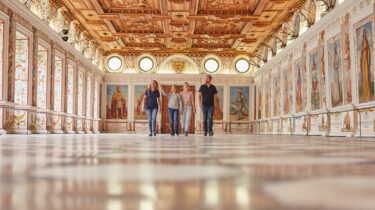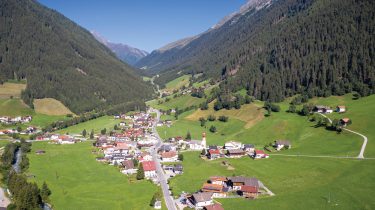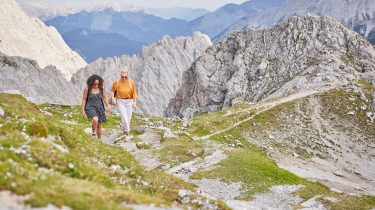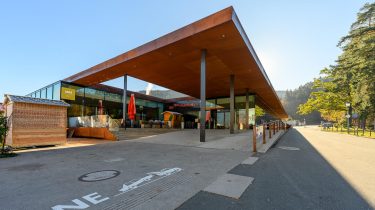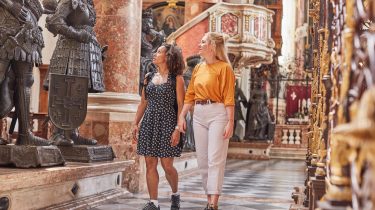Architectural splendour and awe-inspiring scenery: culture and nature stand side by side in the Innsbruck region
Last updated on 17.04.2025
The perfect balance between urban beat and alpine retreat – that’s what the Innsbruck region does best. This is a place where city and mountain blend into one, offering a fascinating treasure trove of both cultural gems and natural riches, all within easy reach. Here, you can easily enjoy the best of both worlds – all in one go.
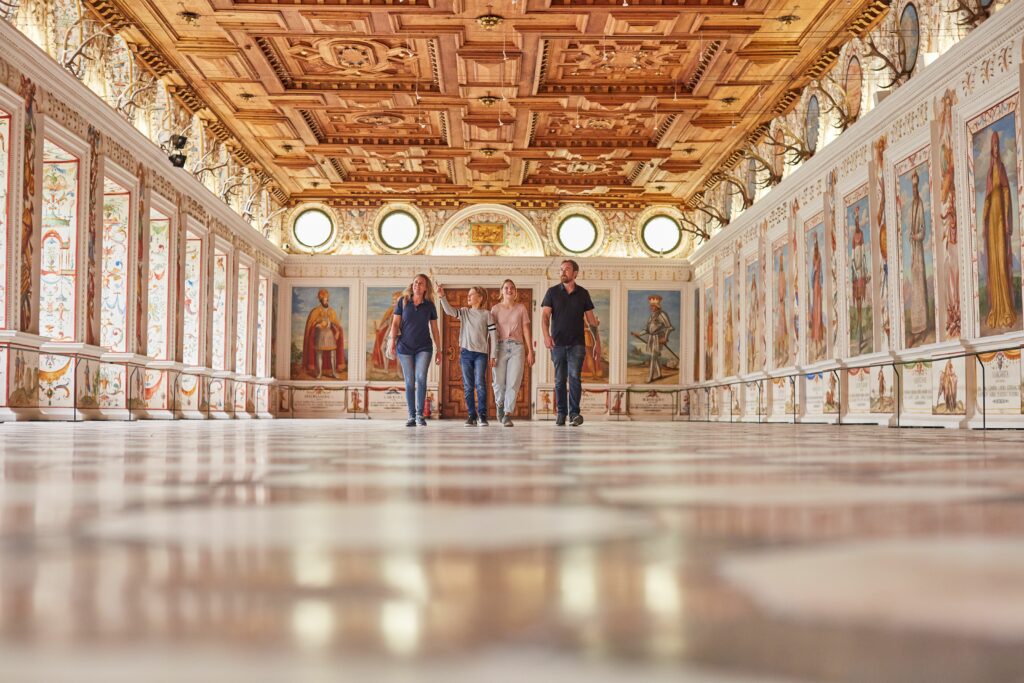
The beating heart of the city: palace and gardens
A green oasis in the heart of Innsbruck, the Hofgarten Imperial Gardens are a popular place for anyone keen to take a breather from the hustle and bustle of the city. Originally designed by Duke Friedrich IV as a hunting ground, this site has been revamped on multiple occasions since 1412 – including by Empress Maria Theresia, who had it redesigned in Baroque style. Nowadays it offers not only the inviting prospect of lush meadows and shady trees, but also a small “Kammergarten” (“privy garden”), an English-style landscape garden and a nursery. Just a stone’s throw away from the Imperial Gardens is one of Tyrol’s most prized cultural monuments: the Hofkirche Court Church, which houses the empty grave of Emperor Maximilian – “the last knight”. This imperial resting place is guarded by 28 larger-than-life black figures cast in bronze, which is why the church is also popularly known as the “Schwarzmanderkirche” (“Black Men Church”). The neighbouring Hofburg Imperial Palace is another place where the history of Habsburg rule is brought to life, and its historic state rooms are particularly worth a visit.
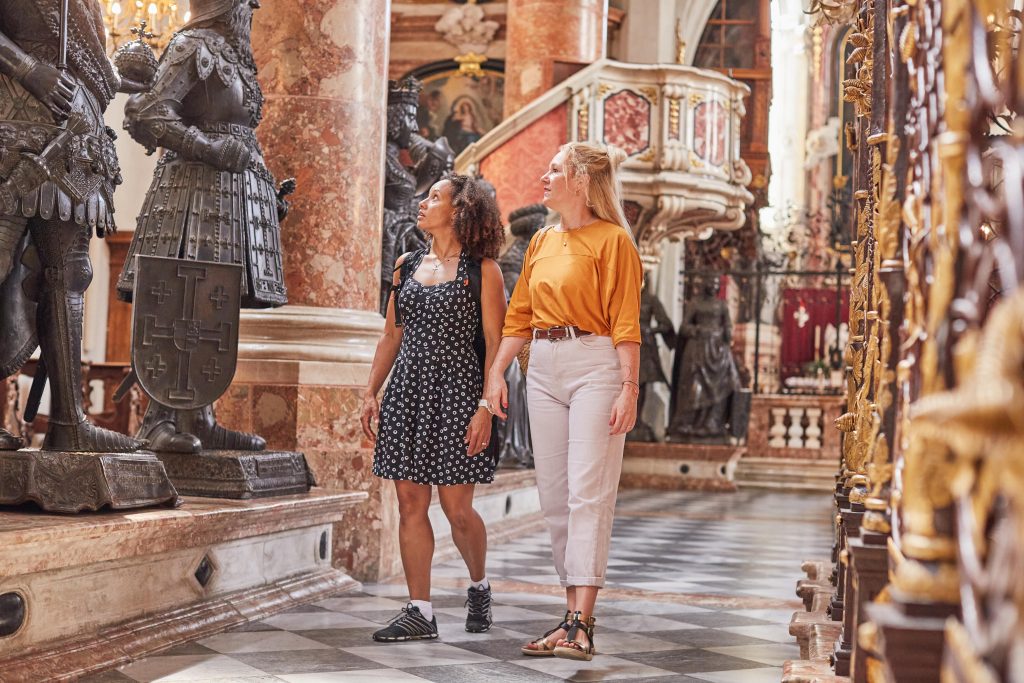
Splendid surroundings: castle and park
Perched proudly above Innsbruck in the south of the city is the majestic Ambras Castle. This impressive edifice dates back centuries, but it owes its present structure and appearance mainly to Archduke Ferdinand II, who lived there with his (secret) lover and consort Philippine Welser from 1564. He arranged for the castle to be transformed into a magnificent Renaissance palace and filled it with his valuable collection of art, which included armour, weaponry and sculptures. This treasure trove of wonders is what earned Ambras Castle its status as the world’s first museum. The castle is surrounded by an extensive park, where visitors can explore rocks, small gorges and bridges – and, with a bit of luck, spot the peacocks that live there, reflecting the opulence of the castle in their splendid iridescent plumage. Taking a stroll through the park, like the nobility used to do in times gone by, offers a chance to feast your eyes on nature and architecture at their finest while enjoying a peaceful pause in the fresh air.
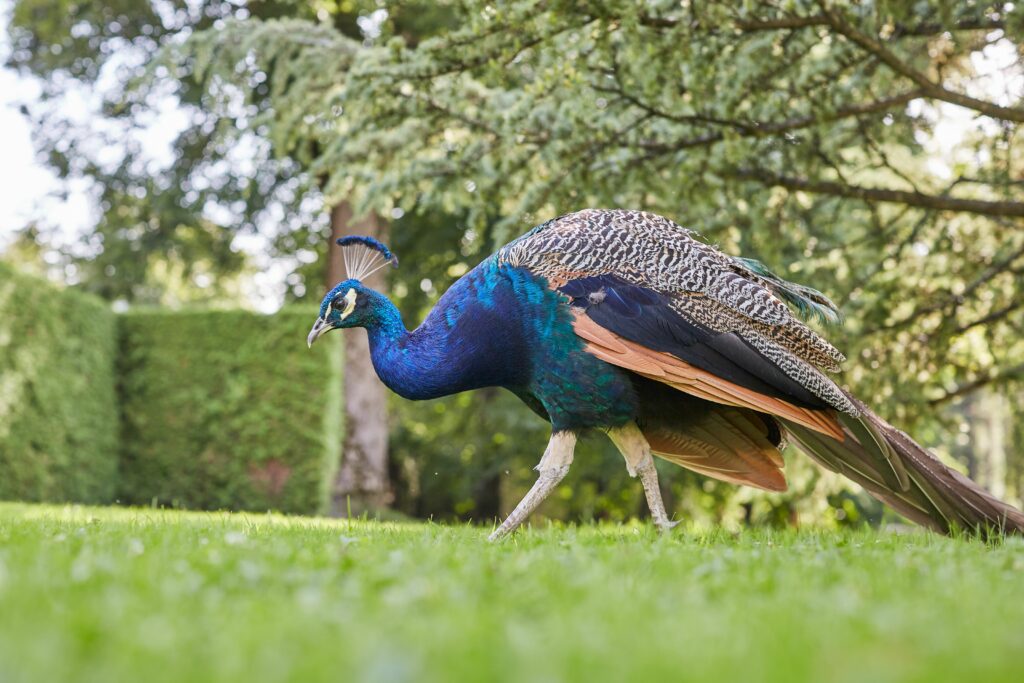
Panorama upon panorama: battleground and gorge
Not far from Ambras Castle, and visible from far and wide, stands the Bergisel – arguably Innsbruck’s most historically significant elevation. It gained its fame as the scene of the Tyrolean uprising, the story of which is told in the Tirol Panorama Museum. The centrepiece of this museum is a giant 360-degree panoramic painting, depicting the third great Battle of Bergisel across some 1,000 square metres of canvas. A more recent addition to the Bergisel is its iconic ski jump, designed by award-winning architect Zaha Hadid and providing the setting for some thrilling sporting contests. A panoramic trail, which takes you all the way around the hill in just under an hour, allows you to view this modern landmark from all angles. As well as glimpses of the ski jump itself, you can enjoy vistas over the Sill Gorge, a green haven south of Innsbruck that is best viewed from the Drachenfels observation deck.

Reaching new heights: station and summits
The Bergisel ski jump is not the only place in the Tyrolean capital where Zaha Hadid has left her architectural signature. She was also behind the futuristic design of Hungerburgbahn funicular stations, inspired by the region’s snow-covered and ice-sculpted landscapes. The funicular takes visitors straight from the centre of Innsbruck up to the Hungerburg district, where they can catch the Seegrubenbahn cable car to carry on up the mountain. Not far from the mountain station is the start of the Perspektivenweg (“Path of Perspectives”), designed by the famous architectural firm Snøhetta. Almost three kilometres long, this route takes you through beautiful natural scenery, punctuated by a series of structural elements that invite you to stop and pause for a while. These include benches and platforms where you can take in fantastic views far into the distance and see the landscape from unconventional perspectives – as the name of the path promises. In a similar but slightly different way, the quotes from Austrian philosopher Ludwig Wittgenstein inscribed on the architectural elements also encourage passing hikers to stop for a moment, giving them pause for thought.
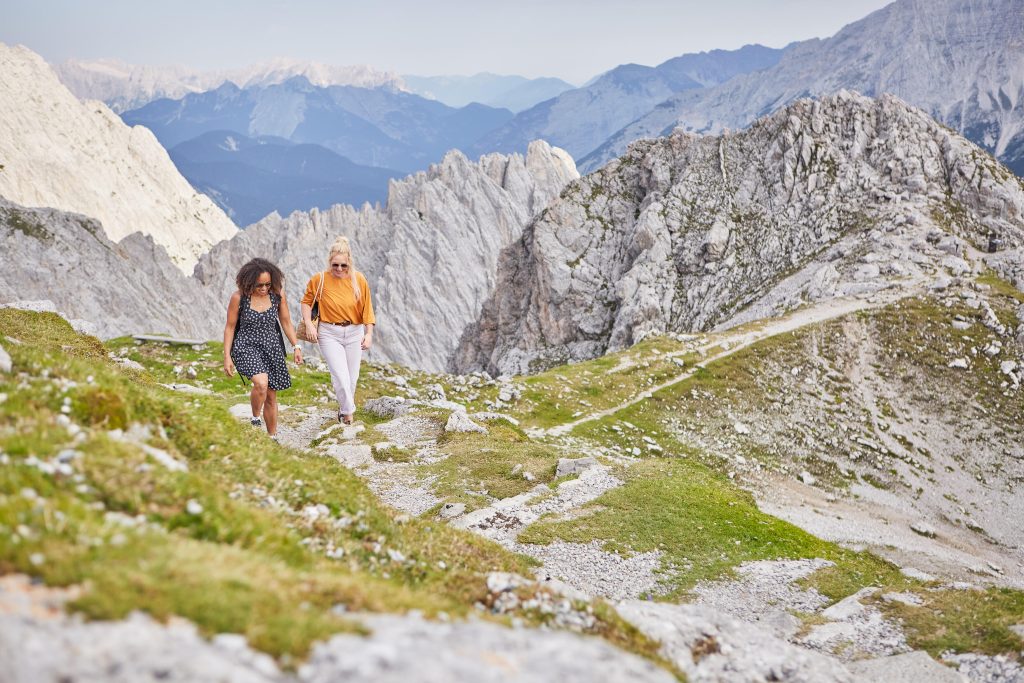
Traces of the past: wilderness and woodland
There are plenty of opportunities to immerse yourself in (Habsburg) history in the Innsbruck region – not just in Innsbruck itself, but in the surrounding areas as well. Emperor Maximilian has left his mark here too: a keen hunter, he often ventured out and about in the region with his entourage, particularly in search of chamois, and his hunting spots included the Sellraintal Valley. This is commemorated in the Jagdschloss Kühtai (“Kühtai Hunting Lodge”), originally a farm house that was let to the Habsburg ruler in the late 15th century and later extended by Leopold V. Now this historical building houses a luxurious hotel, offering “Fürstenzimmer” (“Prince’s rooms”) that feature original pine panelling in honour of its past. The Sellraintal Valley itself has also retained its charm over the centuries. Its tranquil beauty has made it one of the most popular destinations in the Innsbruck region for visitors looking to refresh and recharge. There are numerous appealing hiking routes to explore here through the alpine landscape and around the delightful “mountaineering villages” of Sellrain, Gries and St. Sigmund.
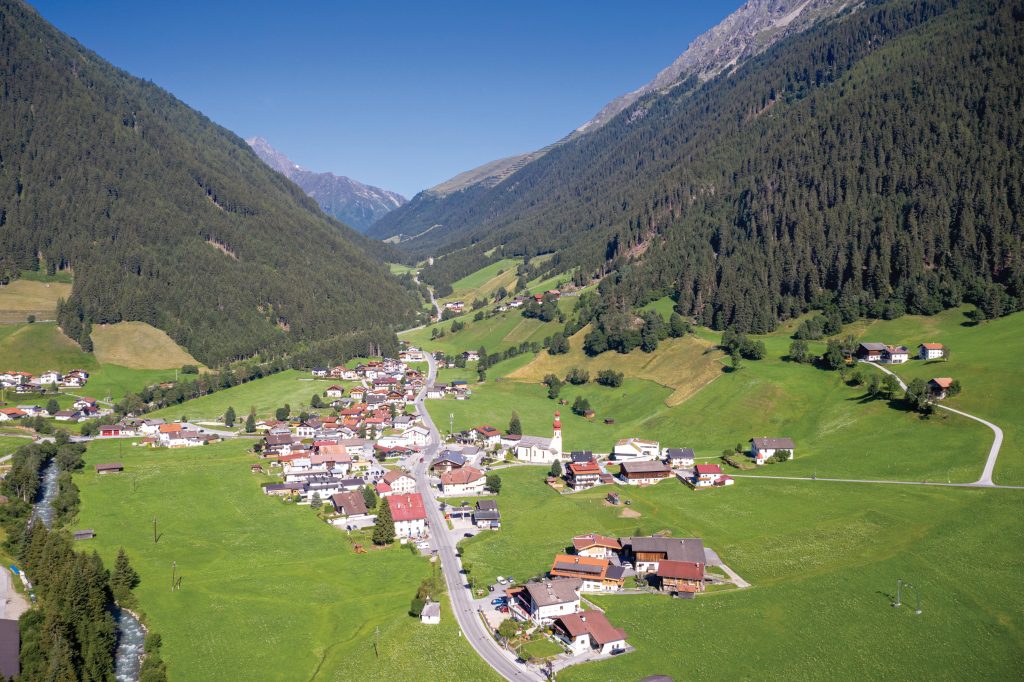
About the Innsbruck region
The Innsbruck region is unique in its symbiosis of vibrant urbane space and captivating alpine landscape. It covers both Innsbruck itself – the capital of Tyrol – and over 40 locations in the surrounding area, with six distinct tourist regions: the city, the Inntal valley, Kühtai-Sellraintal, the Mieming Plateau and the south and west regions. Innsbruck offers all the sights and sophistication of a thriving city, yet sporting thrills and opportunities to conquer your next peak are never very far away. The free Welcome Card offers guests the chance to experience the region in all its diversity, with access to various attractions and free use of local public transport. The official destination management organisation for the Innsbruck region is Innsbruck Tourismus. Its 100 or so employees and eleven tourist information offices are on hand to help you enjoy unforgettable holiday experiences in true harmony with our local communities and natural surroundings.
Further links
Website: www.innsbruck.info/en/
Blog: www.innsbruck.info/blog/en/
Facebook: www.facebook.com/Innsbruck
Instagram: www.instagram.com/innsbrucktourism
X: www.twitter.com/InnsbruckTVB
YouTube: www.youtube.com/user/InnsbruckTVB
Pinterest: www.pinterest.at/innsbrucktvb/_created

